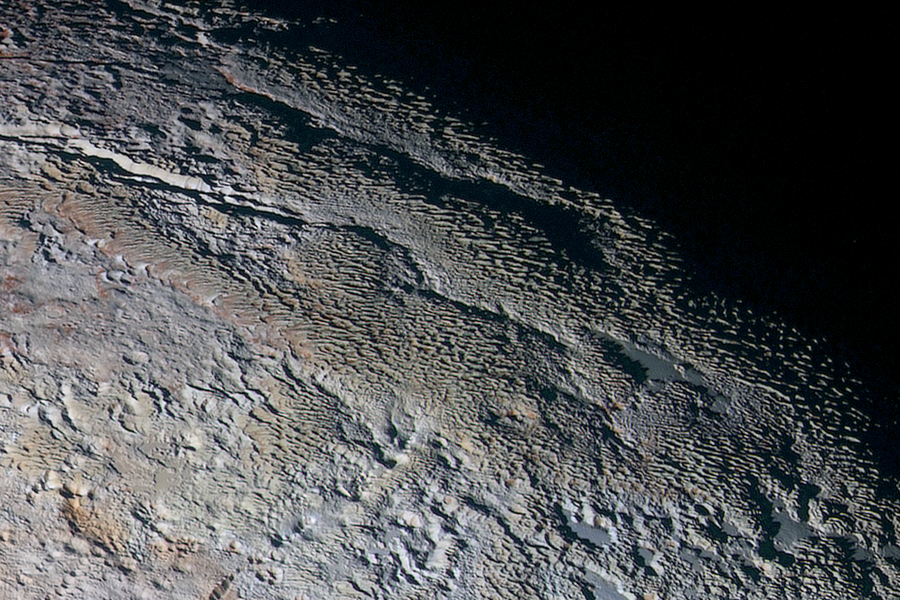SEE Pluto's scaly surface in the latest dazzling images from New Horizons
Loading...
New Horizons has beamed back high-resolution images of Pluto to NASA. The pictures reveal a landscape that many scientists did not think possible. The pictures are mysterious and striking. The landscape is unexpected. For the first time, humans are able to have a detailed view of the surface of the dwarf planet.
The surface of Pluto “looks more like tree bark or dragon scales than geology. This’ll really take time to figure out; maybe it’s some combination of internal tectonic forces and ice sublimation driven by Pluto’s faint sunlight,” William McKinnon, New Horizons Geology, Geophysics and Imaging (GGI) team deputy lead, said in a NASA blog post.
In the above image the informally named Tartarus Dorsa is shown in contrast to the nightline. The image combines various different kinds of photos to give a better view of the surface and color of Pluto. The rounded and textured mountains are bizarre examples of Pluto’s strange geology. The scale-like patterns that Dr. McKinnon described are visible on the surface.
This next image is a swath of Pluto’s surface. It displays the most detailed color map of Pluto that has been made yet. The entire spectrum of color is visible on Pluto’s surface, from the pale yellow and blue to the rich orange and red. The color was enhanced to differentiate more accurately between the colors.
This high-resolution image of Pluto was taken moments before New Horizon’s closest approach to the dwarf planet. Small features and geological elements on Pluto’s surface are visible, from craters to blocks of mountains. The large basin is known as Sputnik Planum and it’s texture is visible in the image. The image is 330 miles across, according to NASA’s New Horizon team.
This last image was also taken just before the spacecraft’s closest approach on July 14. The image shows 75 miles of Pluto’s surface. Two ice mountains are completely surrounded by plains.
The spacecraft sent more gifts than just images home to the NASA New Horizons team. Compositional information is helping the team analyze the planetary composition of Pluto.
“New Horizons has the ability to make exquisite compositional maps across the surface of Pluto, and that will be crucial to resolving how enigmatic Pluto works,” New Horizons surface composition team lead Will Grundy said in the NASA post.












